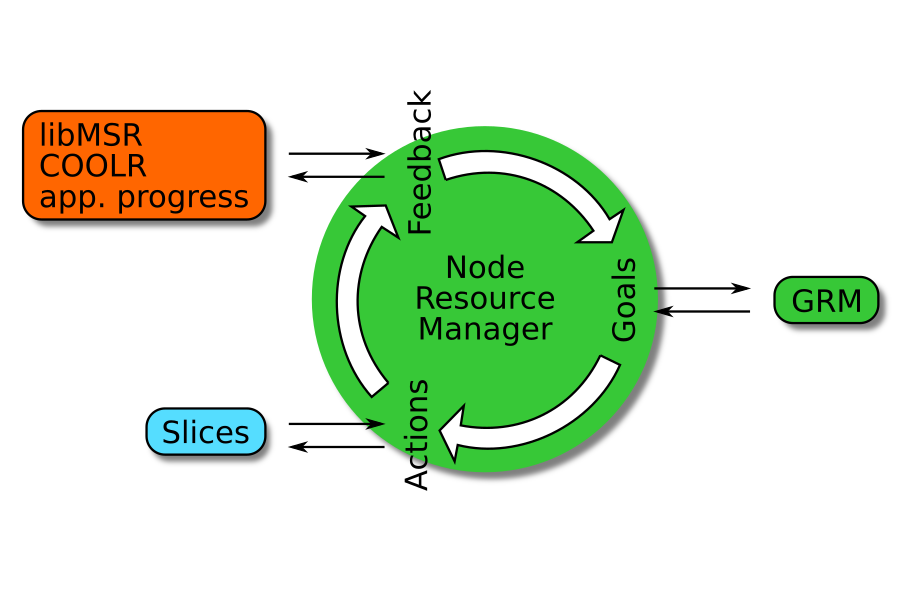Overview
We are building a portable, open source, integrated, validated, and scalability tested software stack that improves the performance and scalability and provides increased functionality to exascale applications and runtime systems.
System resources should be managed in cooperation with applications and runtime systems to provide improved performance and resilience. This is motivated by the increasing complexity of HPC hardware and application software, which needs to be matched by corresponding increases in the capabilities of system management solutions.
Our approach is to augment and optimize for HPC the existing open source offerings used by the vendors. The Argo software is developed as a toolbox – a collection of autonomous components that can be freely mixed and matched to best meet the user’s needs.
The project currently has four focus areas:
Memory ManagementPermalink
We are developing software techniques to enable applications and runtime systems to make the best use of the capabilities of complex new memory types being incorporated into exascale node designs.
Due to a large variety of emerging technologies, we are pursuing two complementary strategies aimed at different memory types.
UMap
User Level Memory Map (UMap) is a memory map approach to incorporating NVRAM into complex memory hierarchy. It replaces mmap for out-of-core data. By exploiting large virtual address spaces, data sets can be accessed directly as if in memory; this is particularly well suited to analyzing large observational and simulation data. Thanks to its user-space design, UMap is flexible and easy to use.
AML
AML provides explicit, application-aware memory management for deep memory systems. It can be used to create, for example, a software-managed scratchpad for multilevel DRAM hierarchy such as HBM and DDR. Such a scratchpad provides applications with a memory region with a predictable high performance for critical data structures.
Power ManagementPermalink
Dynamic power management is expected to be critical in the exascale era, both in terms of not exceeding the overall available power budget and in terms of utilizing the available power to make the most application progress. In the Argo project, we employ hierarchical power management that includes both system-global and node-local mechanisms and policies.
GRM
Global management of power in Argo is handled by the Global Resource Manager (GRM). As part of this effort we added dynamic power awareness to the popular batch scheduler SLURM. We also extended the Flux scheduler with power awareness, addressing static manufacturing variation. This work is part of the community-wide PowerStack effort.
NRM
Power management at the node level is built into the Argo Node Resource Manager (NRM). It works in a closed control loop, obtaining goals from the GRM, acting on application workloads launched within slices, and getting feedback through the monitoring of hardware sensors measuring, for example, power draw or temperature.
Resource ManagementPermalink
We use resource partitioning to divide physical resources on the compute nodes into separate partitions which we call slices. Slices can be used to separate individual components of parallel workloads, in addition to cordoning off system services; this physical separation ensures an improved performance isolation between components.
Slices
The management of slices is another responsibility of the NRM, which maps them to the node’s hardware topology, arbitrating resources between applications and runtime services, and providing integration with the power management. Resources can be dynamically reconfigured at run time; interfaces are provided for use from applications and from global services.
Hardware Co-DesignPermalink
We are continuously exploring emerging new hardware trends and devices, looking for how best to exploit the new capabilities in both traditional HPC workloads and emerging ones such as machine learning. We try to identify how the new features should be integrated into existing runtime systems and operating systems and in what way such features should be exposed to applications.
A significant portion of this work is covered by NDAs so it cannot be included here. Instead, we provide an overview of related open research carried out in collaboration with universities.





